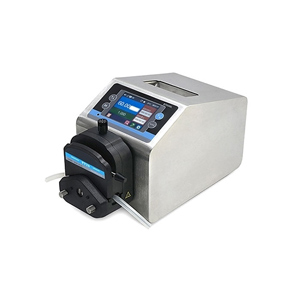How Does a Peristaltic Pump Work?
The peristaltic pump is mainly suitable for all kinds of complex liquid proportioning, suitable for metering and feeding, and can realize high-precision flow transmission control. The high precision peristaltic pump has low noise and easy operation, stable performance, a large flow rate of data storage when powered off and can be timed. It is widely used in environmental protection, medicine, food, the chemical industry and other fields, as well as laboratories in universities and other related industries. A wide variety of peristaltic pumps are available on ATO.com.
Peristaltic Pump Working Principle
Structurally, the high precision peristaltic pump consists of three parts: a circular inner cavity pump shell roller and an elastic hose. The elastic hose is installed on the pump sodium, and the hose is squeezed by the roller to form a closed cut-off point. As the rollers turn, the closing point moves with the rollers. The elastic hose returns to its natural state after the rollers leave, and a vacuum builds up in the hose, which sucks in fluid and squeezes it out by the next roller.
The peristaltic pump tube is in a peristaltic state during work. Its hose is squeezed and closed by the roller, and the fluid will not return, so the peristaltic pump is a positive displacement pump or a positive displacement pump and a positive displacement pump (the speed is proportional to the flow rate), and the fluid of the peristaltic pump only passes through the peristaltic pump. The hose, without valves and seals, does not touch any other parts of the pump. The liquid is peristaltic extruded inside the pump tube, so there is no shearing of the conveyed liquid and no damage to shear-sensitive fluids.
The peristaltic pump has the ability to deliver the same flow in both directions, and it will not cause damage to any part of the pump under the condition of no liquid idle operation. It can generate up to 98% vacuum and can transport all kinds of materials with abrasive, corrosion, oxygen-sensitive properties and various foods. Only the hose is the part that needs to be replaced, and the replacement operation is extremely simple. The conveyed product does not come into contact with any parts other than the hose.

